AMS: Data Provider Service - Generating performance metrics with Spring Boot Actuator
Introduction
This is the first article in a series of upcoming articles on designing and creating an Application Monitoring System. An Application Monitoring System (AMS) is a system that can monitor performance of other running applications. I am building this application component by component from scratch and I will publish it here on this blog. In this post, I talk about how to create and run services that provide application performance metrics using Java, Spring Boot and Docker.
Table of Contents
- Introduction
- What are applications performance metrics?
- What the data-provider-service is and what it’s not
- Creating a basic Java service using Spring Boot
- Configuring Spring Boot Actuator for generating runtime metrics
- Securing the endpoints with Spring Security
- Running as a Docker container
- Conclusion
What are applications performance metrics?
Understanding the health and performance of the deployed applications is crucial to ensure availability and usability of the services. Application performance metrics are the raw measurements of various resource usage or behaviours of an application at any given time. To monitor and analyze the performance of an application, these metrics are periodically collected and stored. Here are some examples of application performance metrics:
- CPU usage
- Memory usage
- System uptime
What the data-provider-service is and what it’s not
The data-provider-service is not exactly a part of the Application Monitoring System. This service is an example of how to generate various application performance metrics with the help of Spring Boot Actuator. This service will then be used to test the actual Application Monitoring System.
Creating a basic Java service using Spring Boot
Spring Framework is probably the most popular application framework and IoC container for Java and Spring Boot is Spring’s convention-over-configuration solution for easily creating ready-to-run, production-grade Spring applications.
To create a basic Spring Boot project, head over to start.spring.io, populate the required details and click on Generate.
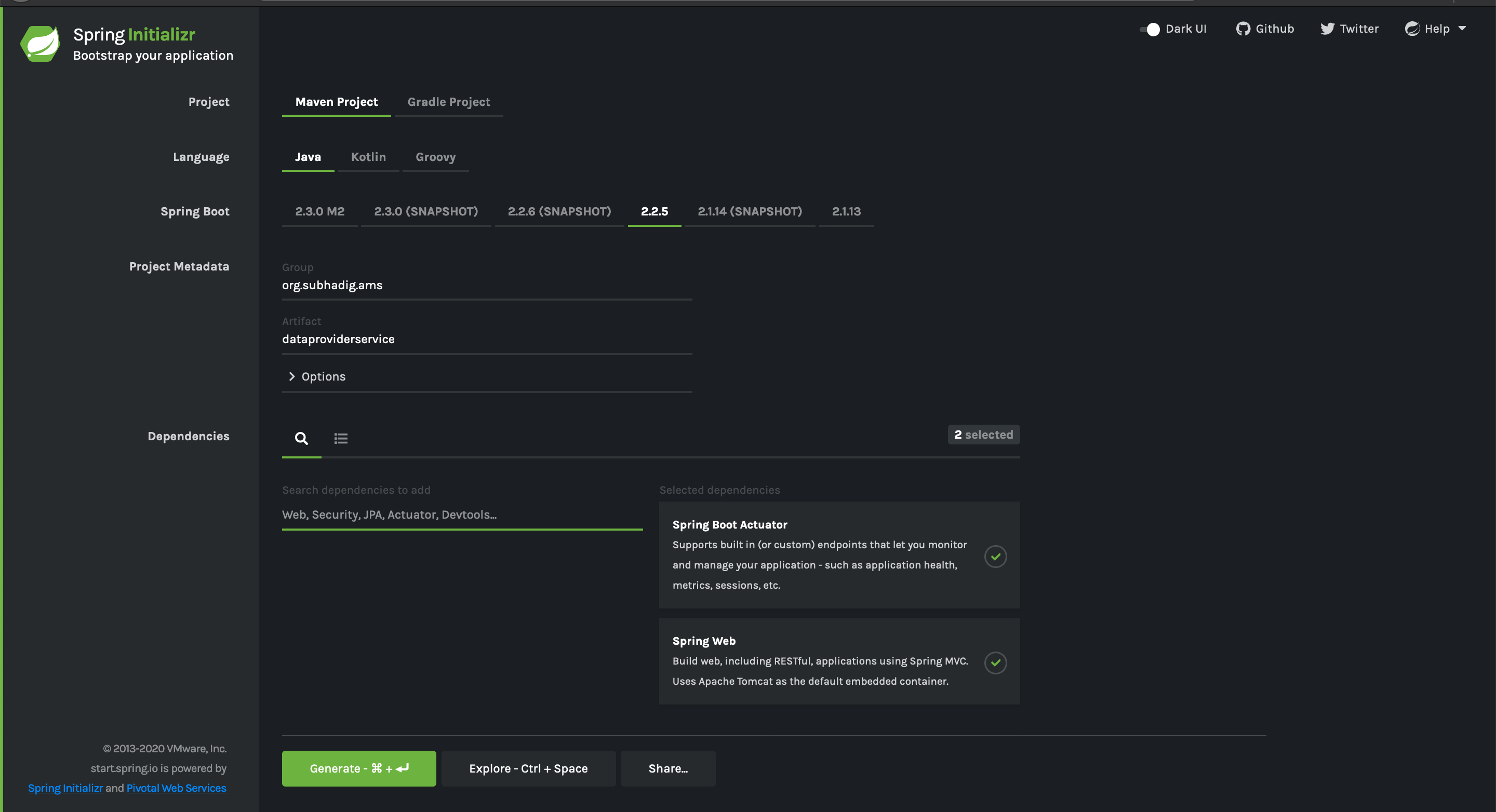
In the above screenshot, I have selected the following Spring modules under the Dependencies section:
- Spring Boot Actuator: The Spring Boot module that monitors a running application and generate performance metrics.
- Spring Web: Since we will be exposing the Spring Actuator generated metrics over REST.
Configuring Spring Boot Actuator for generating runtime metrics
The Spring Boot Actuator module has the capability of monitoring a running application among other things. It has an inbuilt set of application performance metrics that it reports by default which can be exposed via either JMX or REST. Custom metrics are also supported. Here in this section, I will only use the default metrics supported by Spring Boot Actuator and I will expose those over REST.
Enabling the required endpoints over HTTP
In the data-provider-service/src/main/resources/application.properties file
add the following lines:
management.endpoint.metrics.enabled=true
management.endpoints.web.exposure.include=health, metrics
Now if I run the application and head over to http://localhost:8080/actuator, I should see all the available Spring Boot Actuator endpoints.
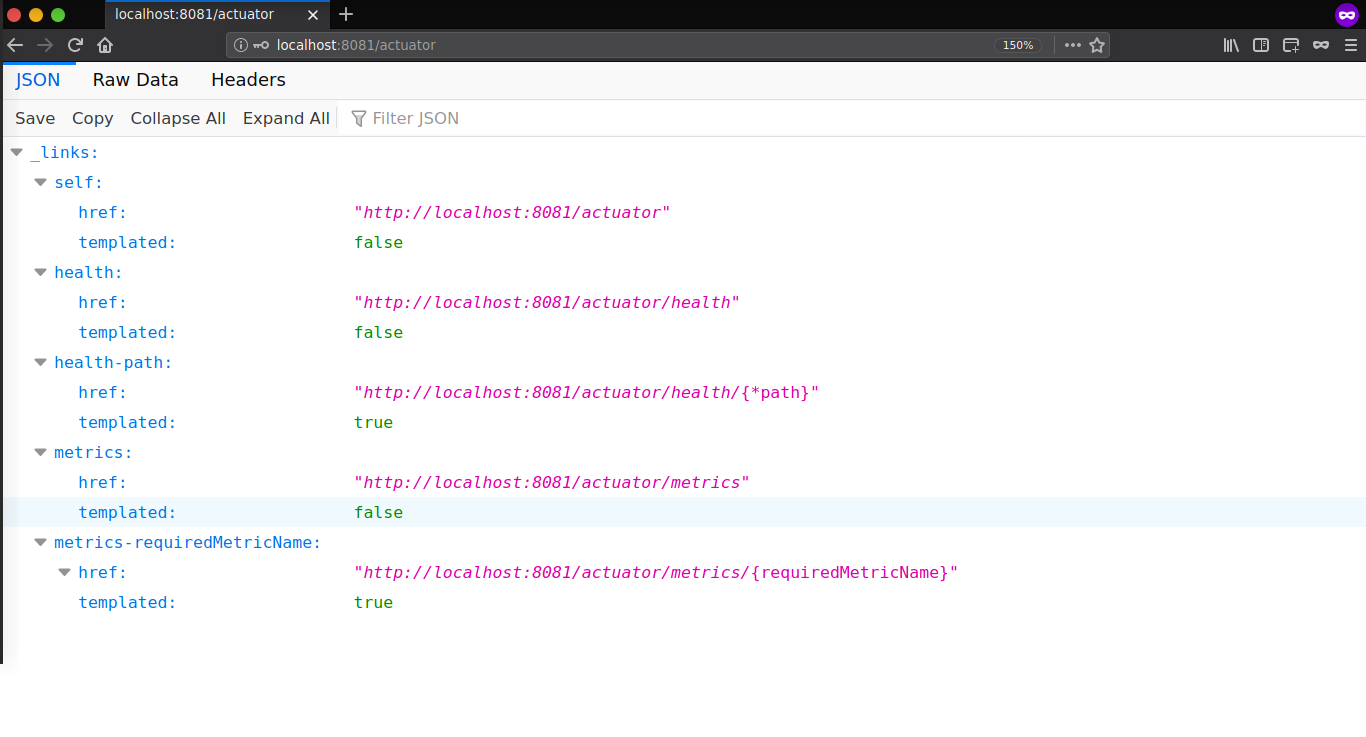
In this example, I have only enabled the health and metrics endpoints. Here is the full list of available endpoints.
http://localhost:8080/actuator/metrics should show a list of available metrics.
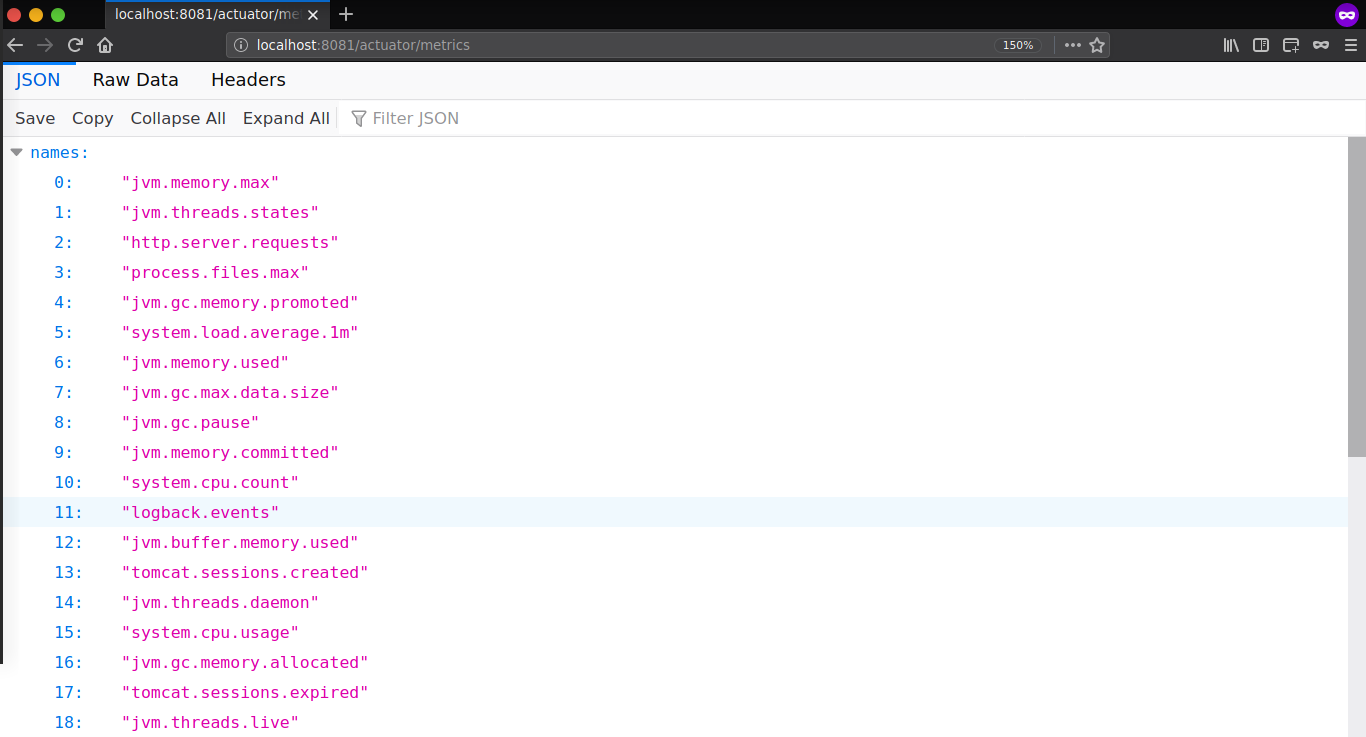
And if I want to see the current value of any metric from the list like jvm.memory.max, I can go to the URL http://localhost:8080/actuator/metrics/jvm.memory.max and it should show me something like the below screenshot.
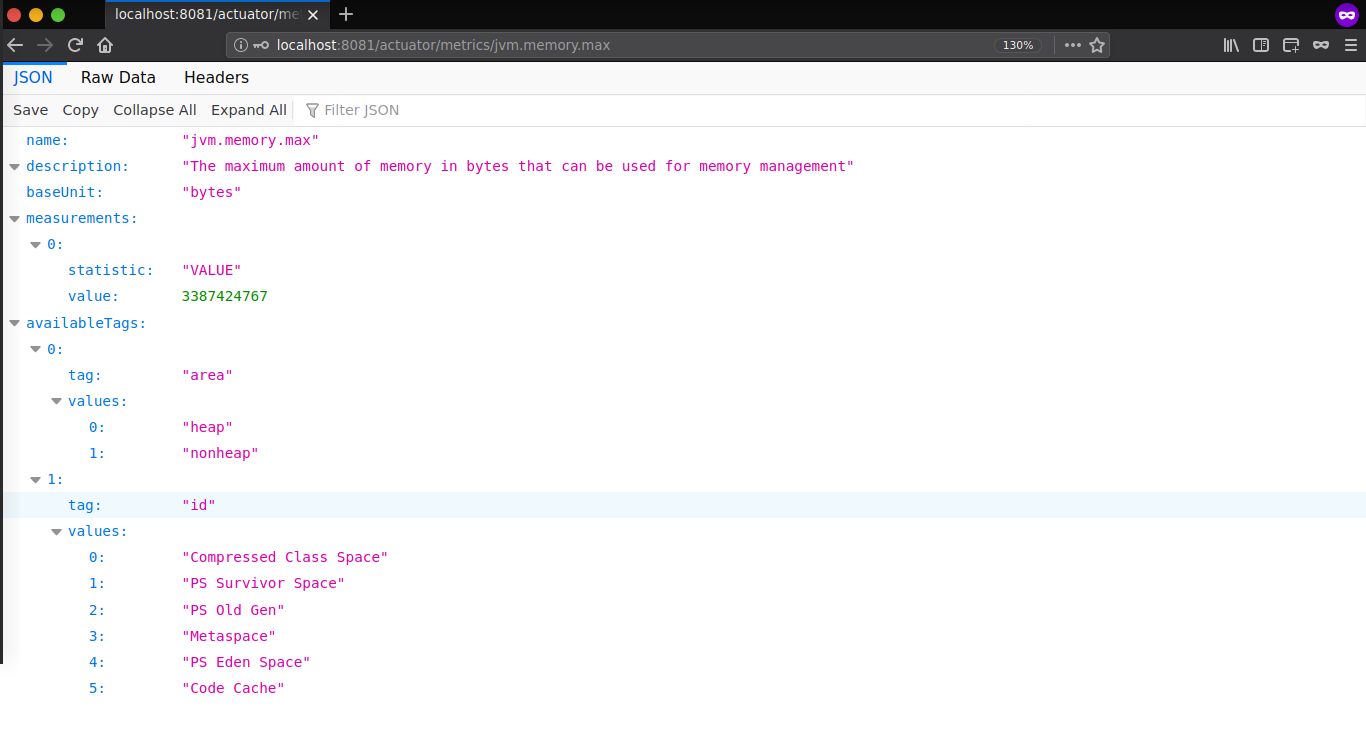
Securing the endpoints with Spring Security
Additionally, you might want to secure the metrics REST endpoints exposed by Spring Boot Actuator in the previous step with authentication. With Spring Security, it’s simple enough to do. Here are the steps to add a basic authentication to the endpoints.
Import the maven dependency
In the data-provider-service/pom.xml, add the following dependency.
<dependency>
<groupId>org.springframework.boot</groupId>
<artifactId>spring-boot-starter-security</artifactId>
</dependency>
Use fixed passwords
By default Spring Security will generate a new password every time you boot up your application which may not be the desired behaviour if you plan to poll the endpoints from a different system.
To use a fixed username and password, add the following two lines in the
data-provider-service/src/main/resources/application.properties file.
spring.security.user.name=admin
spring.security.user.password=admin@123
Now if you restart your application and go to http://localhost:8080/actuator, you should be presented with the following login screen:
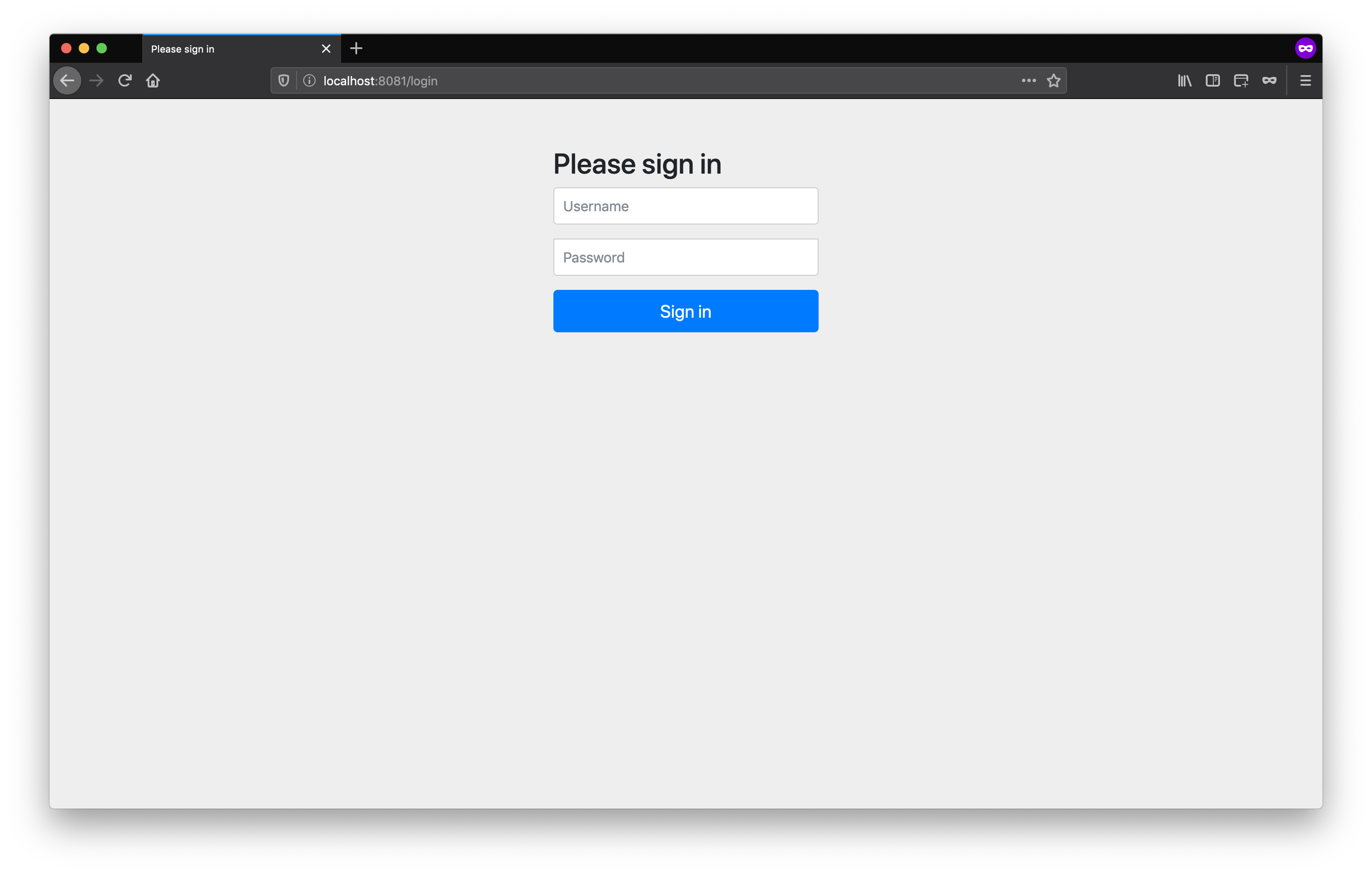
Running as a Docker container
I usually package my applications as Docker images due to the ease of running them both locally and remotely. Also Docker containers provide a more predictable runtime environment for the applications.
To package the data-provider-service as a Docker image, copy the following
content to data-provider-service/Dockerfile file.
FROM openjdk:8-alpine
MAINTAINER subhadig@github
ARG jarfile
COPY $jarfile /opt/app.jar
ENTRYPOINT ["/usr/bin/java", "-jar", "/opt/app.jar"]
EXPOSE 8080
The following command creates the Docker image.
mvn package
docker build -t data-provider-service:latest --build-arg jarfile="target/data-provider-service-*.jar" data-provider-service/
In the above docker command, I am passing the maven generated jar file location to the Dockerfile.It copies and packages the jar file from the location with the final image.
The following command runs the image created in the previous step as a Docker container and also exposes the data-provider-service REST endpoints on the 8080 port of the localhost of the host machine.
docker run -d --rm -p 8080:8080 --name provider data-provider-service:latest
Conclusion
Here is the source code of the data-provider-service.
Although there are multiple ways to generate application performance metrics Spring Boot Actuator provides an easy yet powerful approach to start with. One more thing to keep in mind is that, generating these performance metrics also impacts the overall performance of the application, so one should be cautious about generating too many of them too frequently.
In the next post, I will discuss about how to create a data-collection-service and configure it to collect application performance metrics from the data-provider-service.